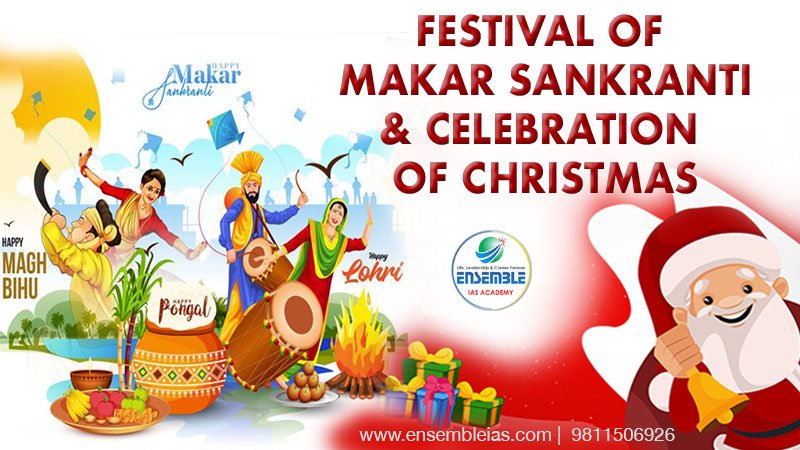The shift in the celebration of Christmas from its original pagan-dharmic roots, specifically the festival of Makar Sankranti, can be understood through geopolitical lenses. The evolution of Christmas involved a deliberate downgrading of Makar Sankranti’s significance.
1. Historical Co-option:
• Christmas, originally tied to the birth of Jesus, underwent a transformation that involved incorporating elements from the pagan festival of Makar Sankranti.
• In certain regions of the U.S. and the U.K., individuals faced severe consequences for celebrating Christmas, as it was seen as diverging from the monotheistic beliefs of Christianity.
2. Religious Complexity:
• The relationship between Christianity and Christmas celebrants is intricate and extends beyond religious affiliations.
• The absence of Jesus’s birthdate in the Bible raises questions about the genuine religious motivations behind Christmas celebrations.
3. Choice of Date:
• Jesus was not born on December 25th; rather, this date was strategically selected to coincide with the pagan festival of the Winter Solstice.
• The Winter Solstice, celebrated on December 25th in pre-Christian traditions, marked the shortest day of the solar calendar and was significant for sun-worshippers.
4. Global Celebration of Makar Sankranti:
• Makar Sankranti has a rich and diverse history, manifesting in various forms and names across the Northern Hemisphere.
• The festival is celebrated as Pongal, Lohri, Uttarayan, Suggi, Magh Saaji, and others in different regions, fostering a global sense of festivity.
5. Wide Geographical Impact:
• Festivals like Yule in Scandinavia, Saturnalia in Rome, and celebrations in Germany involving the worship of Oden and Mithra showcase the widespread influence of solar-centric festivities.
• Geographical sections worldwide embraced unique customs tied to the changing seasons, reflecting a deep connection to natural cycles.
6. Intent of Distortion:
• The diverse nature of these celebrations, spanning various cultures and traditions, became a target for deliberate manipulation.
• The intentional breaking of the spirit of festivals reveals a strategic effort to distort cultural narratives and traditions on a global scale.
7. Hashtags and Narratives:
• The use of hashtags like #Falsefestivals, #makarsnaktanti, and #politicsofchristmas underscores the discourse surrounding the manipulation of festivals.
• The narrative design, punctured truths, and glamorized lies expose the geopolitical strategies at play in shaping cultural narratives.
In essence, the geopolitical dynamics behind the evolution of Christmas from Makar Sankranti reflect intentional efforts to reshape cultural and religious narratives on a global scale, using festivals as a means of influence and control
Best Online Coaching for Civil Service_IAS_ UPSC_IFS_IPS
Free Study Material ENSEMBLE IAS ACADEMY | Call +91 98115 06926
Visit us:- https://ensembleias.com/ | Online Store: https://online.ensemble.net.in/
#MakaraSankranti #Lohri_festival #Uttarayan #Maghi #Sankranti #pongal #lohri #bihu #Christmas #Celebration #Festival #UPSC_IAS_Exam_Study_Material #UPSC_Notification #UPSC #upsc_ias_exam #UPSC_IAS #free_exam #free_answer_key #up_psc #geography_optional #upsc #ias #k_siddharthasir #ensemble_ias_academy




